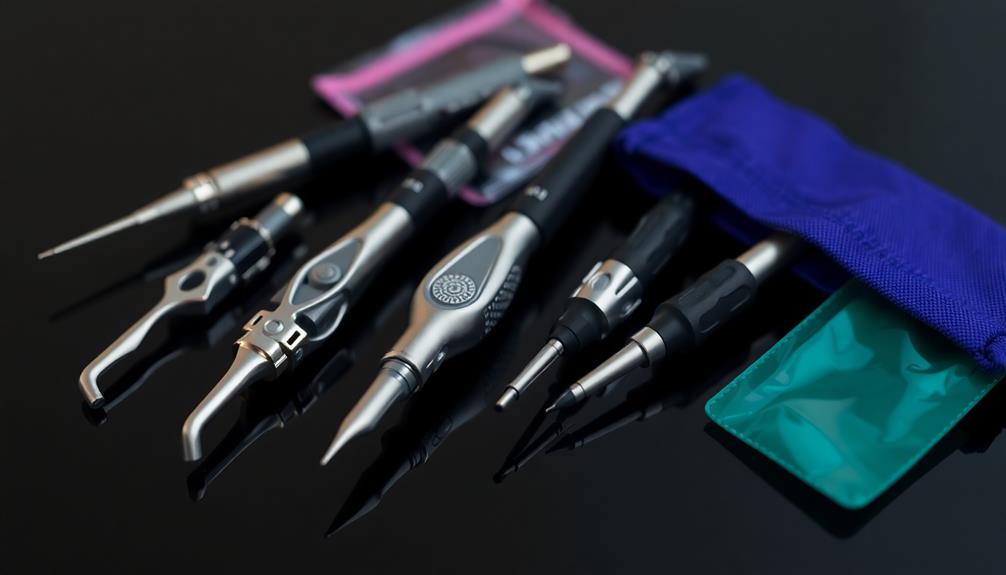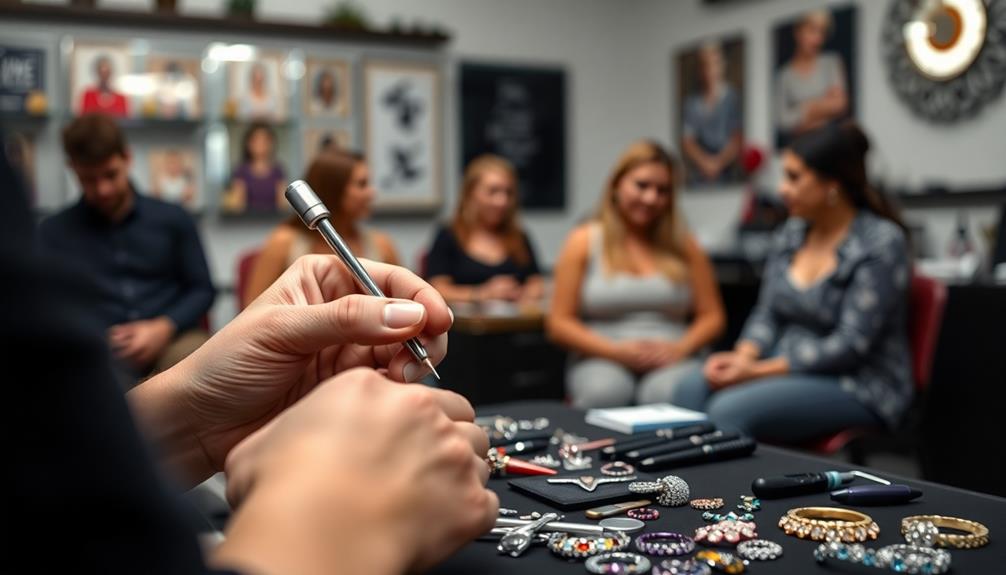When clients push boundaries or dismiss your instructions, it’s a red flag that their respect for your expertise may be lacking. Signs include overly personal questions, ignoring limits, or breakdowns in communication. These behaviors can lead to ethical issues or damage the professional relationship. Trust your instincts and enforce firm boundaries by saying “no” when necessary. To safeguard your integrity and ensure a respectful, trusting environment, it’s essential to recognize early warning signs—you’ll find more insights ahead.
Key Takeaways
- Watch for boundary crossing, such as overly personal questions or attempts to push limits.
- Notice communication breakdowns like ignored instructions or unresponsiveness.
- Recognize when disregarding boundaries damages trust and respectful dialogue.
- Identify ethical dilemmas early, especially when boundaries are consistently ignored or manipulated.
- Trust your instincts and set firm boundaries to prevent escalation and protect integrity.

Have you ever sensed that a client’s behavior might signal trouble ahead? Recognizing early warning signs is essential for maintaining ethical standards and protecting both yourself and your practice. One of the clearest red flags is a boundary crossing, where a client pushes beyond professional limits. This might be subtle at first—perhaps they ask questions that feel too personal or try to steer conversations into sensitive territory. When these boundary crossings happen, they often indicate that the client isn’t respecting your role or the professional nature of your relationship. Ignoring these signals can lead to more serious issues, including blurred lines that compromise ethical standards.
Boundary crossing can also cause a communication breakdown. When a client disregards your boundaries, they might become defensive or dismissive when you attempt to set limits. This creates a cycle where the flow of honest, respectful communication deteriorates. You might find yourself feeling frustrated or unsure about how to proceed, which only deepens the disconnect. If you notice that a client consistently tests your boundaries or dismisses your attempts to clarify the scope of your work, it’s a strong indication that the relationship is veering into problematic territory.
Disregarded boundaries lead to communication breakdowns and deepen the disconnect in client relationships.
A communication breakdown often manifests in misunderstandings or a lack of responsiveness. The client may ignore your instructions or dismiss your concerns, making it difficult to establish trust and mutual respect. This breakdown isn’t just frustrating—it’s a sign that the client may not be fully committed to a professional relationship. When communication becomes strained, it’s easy for ethical lapses to occur, whether intentionally or unintentionally. That’s why it’s essential to address these issues early, setting clear boundaries and reaffirming the scope of your work. If a client refuses to respect those boundaries or continues to push, it’s a red flag indicating that the relationship may need reevaluation.
Additionally, understanding the importance of color accuracy in your work can help you recognize when a client is attempting to manipulate or misrepresent their needs, which could lead to ethical dilemmas. In these situations, your instincts are critical. If you feel that a boundary crossing is happening or that communication is breaking down, don’t hesitate to step back and assess the situation objectively. You’re responsible for safeguarding ethical standards, which sometimes means saying “no” or terminating the relationship if necessary. Recognizing these signs early helps prevent larger issues down the line, protecting your integrity and ensuring the client receives the appropriate level of care. Ultimately, trusting your gut and setting firm boundaries will help you navigate tricky situations before they escalate into more significant problems.
Frequently Asked Questions
How Can Clients Build Trust With Piercers?
Trust building is essential when you work with piercers. To do this, communicate openly and honestly about your expectations and concerns. Listen carefully to their advice and ask questions if you’re unsure. Show respect for their expertise and follow their instructions. Good communication tips include being transparent about your health and previous piercings. This helps establish a strong, trusting relationship, ensuring a safe and positive piercer-client experience.
What Are Common Signs of Inexperienced Piercers?
Imagine walking into a studio where the piercer rushes through your piercing without explaining the process. Signs of inexperienced piercers include poor studio cleanliness, lack of proper tools, or rushing your piercing procedure. They might seem unsure or hesitant, which affects your piercing experience. Always look for a clean environment and a confident piercer to guarantee safety, professionalism, and a positive experience.
How Should Clients Prepare for Their Piercing Appointment?
To prepare for your piercing appointment, review a pre-appointment checklist to make certain you’re fully ready. Make sure you’ve eaten beforehand and stay hydrated. Bring your ID and any necessary paperwork, like a piercing consent form. Avoid alcohol and blood thinners. Arrive on time, dressed comfortably, and follow your piercer’s instructions. Being well-prepared helps ensure a smooth process and reduces complications or discomfort during the piercing.
What Aftercare Questions Are Important to Ask?
Think of your piercing like a delicate garden—you need proper aftercare tips to keep it thriving. Ask your piercer about signs of piercing complications, how to clean it, and what products to avoid. For example, a friend ignored initial swelling, leading to infection. Knowing the right aftercare tips helps prevent complications and ensures your new piercing heals beautifully. Always ask questions to stay informed and care for your body appropriately.
How Can Clients Find Reputable Piercing Studios?
To find reputable piercing studios, you should check their piercing certifications and make certain they follow strict studio hygiene practices. Look for reviews from past clients and visit the studio in person to observe cleanliness and professionalism. Trust your instincts—if something feels off, don’t hesitate to ask questions about their experience and safety protocols. Choosing a studio with certified piercers and high standards for hygiene helps ensure a safe, positive experience.
Conclusion
Remember, trusting your gut is as crucial as the code of chivalry. If a client shows red flags or pushes boundaries, don’t ignore your instincts—think of it as your own personal “firewall.” Saying “no” isn’t just about safety; it’s about protecting your artistry and well-being. Like a knight guarding the domain, stand firm and don’t be swayed by false promises. Your integrity is your greatest armor in this modern-day quest.
I’m Gillian. I love piercings and tattoos- there’s something about the way they make your body look that just makes me happy. I started this blog to share my passion for piercings and tattoos with the world and to help people who are thinking of getting their first piercing or tattoo.
I’ve been writing about piercings and tattoos for a while now on piercings-body.com. I love sharing my knowledge with others and helping people make informed decisions about their bodies.

















